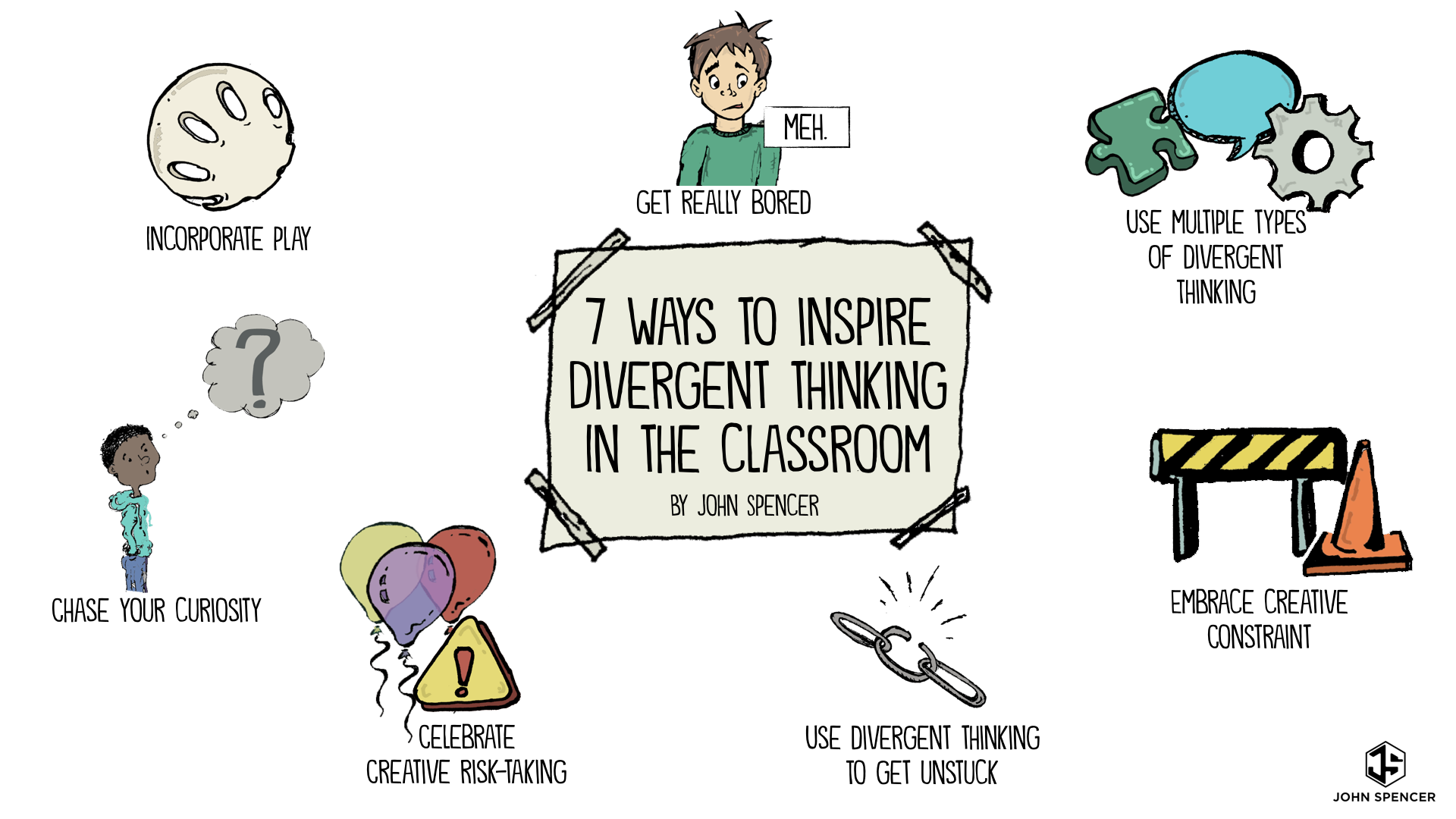
Niru Raghuram
Niru Raghuram is a Primary Science Coordinator & Year 6 Homeroom Teacher at EtonHouse International School Broadrick. As Science Coordinator, she coordinates the development and implementation of the science curriculum with the team of teachers in pre-school and the primary years. As a classroom teacher, her focus is on language, mathematics, social studies and science. Her teaching is based on the inquiry approach pedagogy – the core philosophy of the Primary Years Programme.
Image Source: http://www.spencerauthor.com/divergent-thinking/
In our invention-making projects, students use the Design Thinking process to recognise, define, ideate, prototype (keeping sustainability in mind) and test their working models. This process has spurred them to rethink the idea that digital approaches and methodologies are the best way forward.
Indeed, some of the best ideas are buried under the industrial carpet of low technology. Not all innovative ideas are based upon looking forward. Many of them are inspired when we turn away from the collective gaze at the 'latest tools’ and quietly look back at what we’ve lost.
"5 reasons to encourage the use of vintage tools to spark innovation in our children by John Spencer" provides us with factors to consider as we reflect on opportunities for ‘hands-on thinking’ and nurture our children’s learning journey.
- Vintage tools encourage divergent thinking and creativity. When students use low-technology tools, they have to work within the creative constraints of the available tools. In the process, they engage in divergent thinking because they no longer have unlimited options and sources.
- When children create prototypes by hand, they get a better sense of the actual physics involved in prototyping. They are able to use a digital model to create a roller coaster and test it out using a simulation. However, when they make tiny tweaks to the roller coaster that they’re building by hand, they get to feel it evolve, see the science in it and experience it all in a more temporal way.
- Low-technology experiments may be more developmentally appropriate at times. Younger students especially need to create things using their bare hands. It may not appear to be as polished, but they will learn in a way that is more inclined towards their development. There's a very real danger in asking students to use abstract programs when they are still in a more "concrete phase" developmentally.
- Analogue tools can be more efficient. Advanced programs require additional cognitive load for students to learn and when this happens, it not only takes longer, but also reduces students’ ability to focus on the learning task at hand. Analogue is less dependent on wifi, electricity, a charged device and so on.
- When students use analogue tools, the learning sticks. Handwritten notes encourage them to slow down and provide more options. They can change sizes and styles, sketch visuals, and often make diagrams more smoothly by hand than with typed notes. According to research, handwritten notes can improve conceptual development and lead to higher retention of information compared to typed notes.

